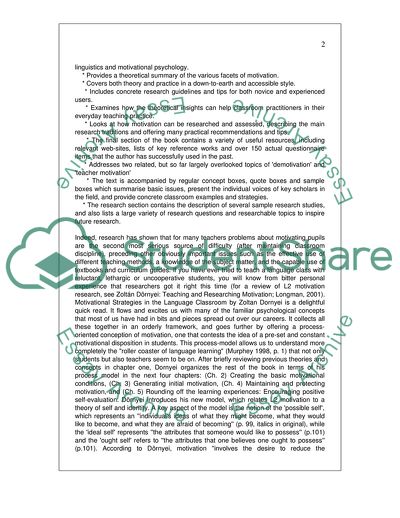Success or Failure in the Second Language Learning Assignment Example | Topics and Well Written Essays - 3250 words. https://studentshare.org/education/1713455-can-the-use-of-negative-language-specifically-the-word-fail-be-positive
Success or Failure in the Second Language Learning Assignment Example | Topics and Well Written Essays - 3250 Words. https://studentshare.org/education/1713455-can-the-use-of-negative-language-specifically-the-word-fail-be-positive.


